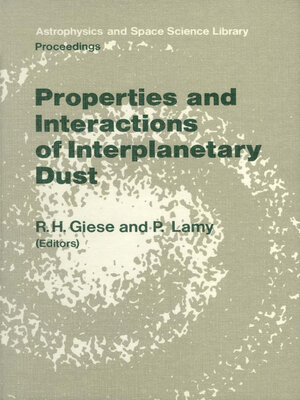Properties and Interactions of Interplanetary Dust
ebook ∣ Proceedings of the 85th Colloquium of the International Astronomical Union, Marseille, France, July 9–12, 1984 · Astrophysics and Space Science Library
By L. Giese

Sign up to save your library
With an OverDrive account, you can save your favorite libraries for at-a-glance information about availability. Find out more about OverDrive accounts.
Find this title in Libby, the library reading app by OverDrive.



Search for a digital library with this title
Title found at these libraries:
| Library Name | Distance |
|---|---|
| Loading... |
Investigation of the interplanetary dust cloud is characterized by contributions from quite different methods and fields, such as research on zodiacal light, meteors, micrometeoroids, asteroids, and comets. Since the earth's environment and interplanetary space became accessible to space vehicles these interrelations are clearly evident and extremely useful. Space measurements by micrometeoroid detectors, for example, provide individual and eventually detailed information on impact events, which however are limited in number and therefore restricted in statistical significance. On the other hand, zodiacal light measurements involve scattered light from many particles and therefore provide global information about the average values of physical properties and spatial distribution of interplanetary grains. Additional knowledge stems from lunar samples and from dust collections in the atmosphere and in deep sea sediments. All these sources of complementary information must be put together into a synoptical synthesis. This also has to take into account dynamical aspects and the results of laboratory investigations concerning physical properties of small grains. Such considerable effort is not merely an academic exercise for a few specialists interested in the solar dust cloud. Since this same cloud exclusively allows direct in-situ acess to investigate extraterrestrial dust particles over a wide range of sizes and materials, it provides valuable information for realistic treatment of dust phenomena in other remote cosmic regions such as in dense molecular clouds, circumstellar dust shells, and even protostellar or protoplanetary systems.







